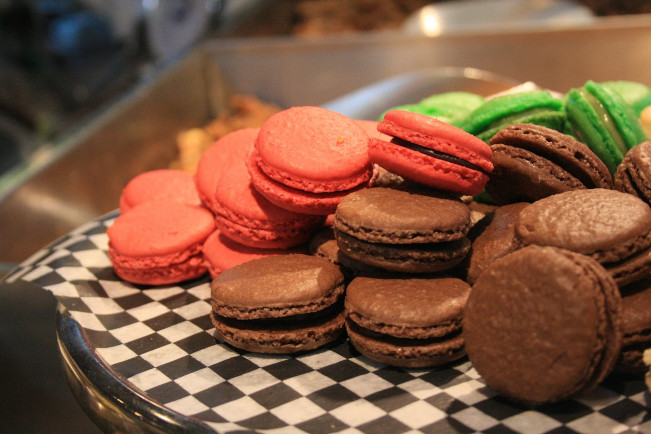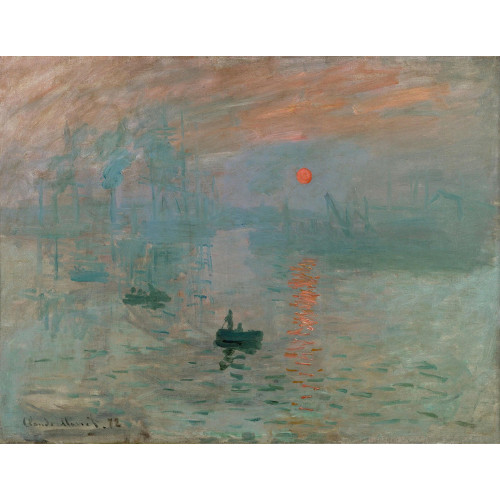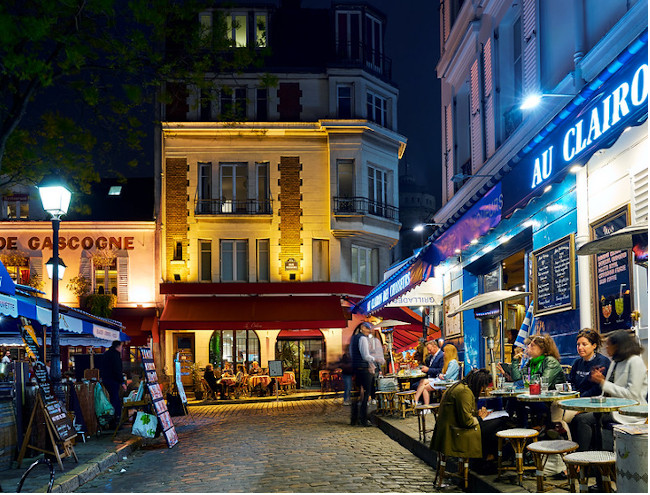Exploring the Joys of Paris

Introduction
When I was growing up in Piedmont, California, way back when, my father mandated that life's fulfillment stems from living the triad of intellectual pursuits, physical activity, and spiritual enrichment. This is how best we can be good to ourselves as well as to serve others—an important balance to strike.
After years of being in the travel world, I've come to realize that this formula might work well when traveling—reinterpreted by moi as "Know," "Play," and "Muse."
While experiencing these different aspects of a place, you can lift your spirits as you take it all in, at the same time building bridges as you meet people and learn about their life and culture.
There's no better place to dabble in this than Paris, where you can ponder how Monet's famous "Sunrise" painting influenced an entire art movement; hand out meals to the unhoused; run or stroll through Jardin de Luxembourg, taking in its scents and sounds; and much more.
You'll find at the back of the book a suggested three-day itinerary that guides you through a full-fledged Parisian experience of Know, Play, and Muse.
So get out there and enjoy the best of Paris, lifting your spirits while making the world a better place.
–Barbara Noe Kennedy
1. LA TOUR EIFFEL
As tangerine and peach skies smudge into periwinkle and violet, La Tour Eiffel—the Eiffel Tower—shimmies and shakes in a spectacular explosion of lights, a free, five-minute extravaganza that reoccurs every hour on the hour, after sundown to 1 a.m. Anyone within range stops and stares, transfixed by the pure whimsy of a glittering tower of metal that originally was supposed to be dismantled. It's Paris’s take on the ugly duckling story. Pure magic.
*Joys of la Tour Eiffel*
KNOW. The Eiffel Tower made its debut at the 1889 World's Fair, demonstrating France's industrial prowess. Destined to be torn down after 20 years, the radio tower at its top made it too useful to be destroyed. The tower's designer, Gustave Eiffel, also built the framework for the Statue of Liberty, among other engineering marvels.
PLAY. Climb to the tower's second floor—674 steps! From there you're obliged to take the elevator to the top. No matter how you go, the view from the top is breathtaking—though, honestly, when the sparkle is on, you don't really benefit from this perspective.
MUSE. Even before construction was complete, naysayers denigrated the tower—including some of the biggest names in the arts. They called it a "tragic street lamp," "belfry skeleton," and "half-bit factory pipe." But 2 million World's Fair visitors embraced the tower, putting it forever at the heart of Parisian lore. It goes to show—don't let fly-by-night critics pierce your dreams.

*Where to See the Sparkles*
The whimsy lifts your spirits, whether you view the show from near, far, or atop. Embrace the flashy spectacle of it all.
Trocadéro. Join the crowds for the show as they gasp and cheer. Nearby Carette, a pretty pâtisserie, has hot chocolate and macarons for a Parisian touch.
Restaurant Les Ombres. You will feel as if the Eiffel Tower is yours alone at this glass-enclosed restaurant atop the Musée du Quai Branly– Jacques Chirac.
Arc de Triomphe. Climb the 284 steps to the top of this historic monument and revel in the scene of the Eiffel Tower seemingly floating atop the rooftops.

5. Impression, Sunrise
At a time when realism in art was still à la mode, Claude Monet painted a sunrise with broad brushstrokes and shocking color. He named it “Impression, Soleil Levant,” and thus ushered forth a whole new genre of painting. Standing in front of this striking masterpiece at the Musée Marmottan Monet, you can’t help but be moved by the courage, the confidence it took for artists to push aside the art rules du jour to invent a new, then ridiculed form. It’s a good reminder: Be true to yourself.
*More Impressionism*
Impressionists embraced the joy of life with cheery colors, sketchy strokes, and happy outdoor scenes. Here's where to see their works.
Musée Marmottan Monet. The world’s finest collections of Impressionism are housed in a former royal hunting lodge.
Musée d'Orsay. A beaux-arts train station now holds a glorious museum of Impressionism.
Le Petit Palais. Renoir and Cézanne are here, but it’s Monet’s “Sunset on the Seine at Lavacourt, Winter Effect” that stuns the most.
Musée de l'Orangerie. Go downstairs to see one of Monet's celebrated Water Lilies cycle.
Auvers-Sur-Oise. Once home to Cézanne, Pissarro, van Gogh, and others, this country village still possesses painterly charm.
Impressionism means taking inspiration directly from nature, trusting your senses rather than what you think you know.
–American poet Michael McClure
21. La Flânerie
Who but the Parisians would fashion a word to describe the art of aimlessly wandering the streets? The flâneur ambles with no goal in mind but simply to be one with his or her surroundings. Along the way, they note the skirting clouds above, fanciful architecture, shop windows, whatever crosses their path—finding the beauty in the mundane. It's a mindful meditation in the middle of the city.
*Joys of La Flânerie*
KNOW. Poet Charles Baudelaire wrote about the flâneur in the 19th century: "For the perfect flâneur, ... it is an immense joy to set up house in the heart of the multitude, amid the ebb and flow of movement." Back then, this practice was the realm of well-to-do male dandies, falling out of favor with the arrival of the Industrial Revolution—one must not be idle! Of course, these days anyone can flâner.
PLAY. Set a fun rule when you head out on une flânerie. For example, turn left when you see someone walking a dog; or cross the street with every green light. You never know what you may discover.
MUSE. La flânerie is a mini workout for the brain. Studies have shown that "awe walks" in unfamiliar areas with the intent of noticing details provide a greater sense of well-being.
**Flânerie Destinations**
Put on some good walking shoes and head out to Paris's enchanting neighborhoods for some good old-fashioned wandering.
IIe St.-Louis. Charles Baudelaire once lived on this tiny isle in the Seine. A stroll takes in hôtels particuliers, cobbled lanes, and river views.
The Left Bank. The classic Paris meander in the buzzy Latin Quarter wanders past shops, parks, historic buildings, and terrasse cafés.
The Covered Passages. A labyrinth of 19th-century covered passageways showcase boutiques, chocolatiers, cafés, and beautiful stained-glass ceilings. A good walk links Passages Jouffroy, Panoramas, Choiseul, Colbert, and Vivienne.
Batignolles Quarter. Tucked away in the 17th arrondissement, this leafy quarter has a market, church, little public garden, and plenty of villagey atmosphere.
Free and alone in the maze of the city, the flâneur craves a revelation that might change his life and destiny.
–Author Federico Castigliano in Flâneur: The Art of Wandering the Streets of Paris

This is an excerpt from 25 Joys of Paris by Barbara Noe Kennedy. It's published here with permission.
Author Bio:
Highbrow Magazine Contributing Writer Barbara Noe Kennedy is an award-winning writer and editor, who specializes in travel writing. She worked for more than 20 years for the National Geographic Book Division, and she has also written for the Washington Post, National Geographic Traveler, the Los Angeles Times, and Fodor's -- in addition to penning a few books -- including 25 Joys of Paris, which was published recently. She is also a Lowell Thomas travel journalism award winner. Barbara has traveled extensively around the world and, along with her husband, is actively involved in helping Zambian students achieve their education and career goals. She writes travel articles and film reviews for Highbrow Magazine.
Highbrow Magazine
Image Sources:
--Provided by the author (via Canva Pro)
--Pxhere (Creative Commons)
--Pedro Szekely (Flickr, Creative Commons)































































































































































































































































































































